Jasmine plants are beloved for their intoxicating fragrance, delicate white or yellow blossoms, and their ability to enhance any garden or indoor space with elegance. However, one of the most critical factors in ensuring the healthy growth and flowering of your jasmine plant is watering. Knowing how often to water a jasmine plant can mean the difference between a flourishing, sweet-scented garden and a struggling shrub.
In this comprehensive 1200-word guide, we’ll walk you through everything you need to know about watering jasmine plants—indoors or outdoors, in pots or in the ground—along with tips on recognizing signs of under- or overwatering.
Introduction: Understanding Jasmine’s Water Needs
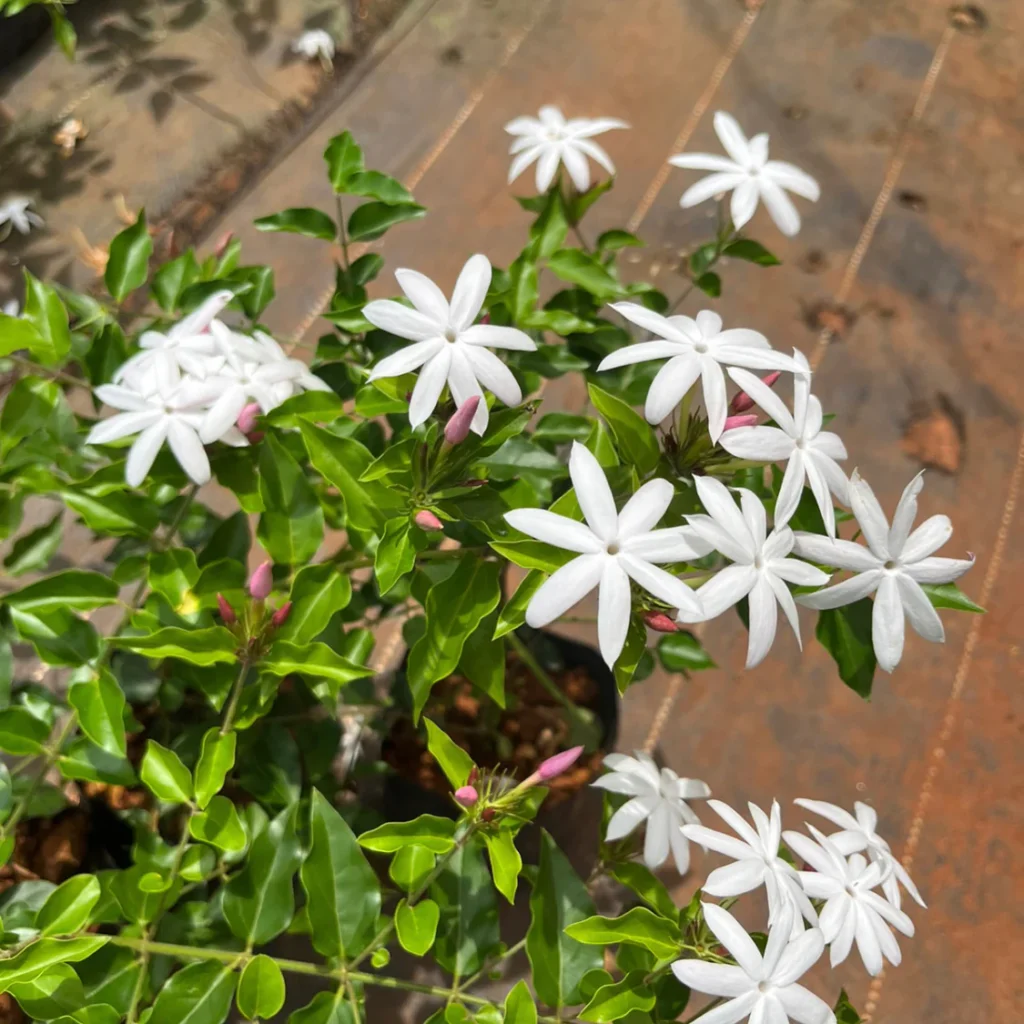
Jasmine (genus Jasminum) is a diverse plant family that includes species like Jasminum sambac (Arabian jasmine), Jasminum officinale (Common jasmine), and Jasminum polyanthum (Pink jasmine). While some varieties are more drought-tolerant, all jasmine species prefer consistent moisture—especially during their growing and blooming seasons.
The frequency with which you should water your jasmine depends on several factors:
- Whether it’s grown indoors or outdoors
- The climate and season
- The soil type and drainage
- Whether it’s planted in a pot or in the ground
Let’s break this down further.
Outdoor Jasmine: How Often to Water
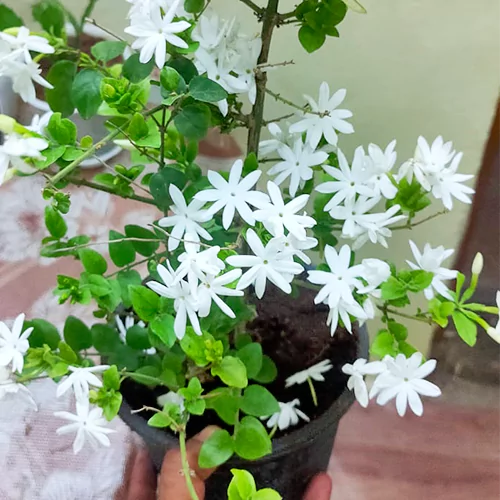
1. During the Growing Season (Spring and Summer):
Outdoor jasmine plants typically require watering 2–3 times per week, depending on your local climate. In hotter regions or drought-prone zones, watering may be needed every other day to keep the soil consistently moist—but not soggy.
2. During Dormant Season (Fall and Winter):
In cooler months, jasmine enters a rest period. Reduce watering to once every 7–10 days, or whenever the top inch of soil feels dry. Overwatering during dormancy can lead to root rot.
3. Newly Planted Jasmine:
Right after planting, jasmine needs more frequent watering—about every 1–2 days—to help the roots establish. Once established (after 4–6 weeks), you can transition to the regular schedule.
Indoor Jasmine: How Often to Water
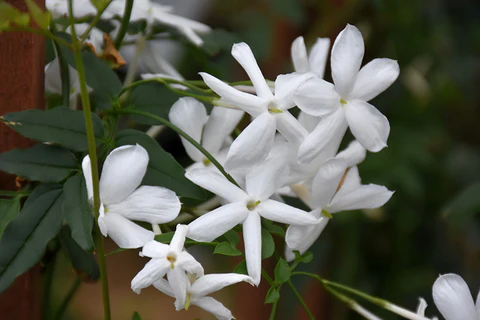
Indoor jasmine varieties need a slightly different approach due to limited air circulation and container constraints.
1. Growing Period (Spring to Fall):
Water once every 4–5 days, ensuring the soil remains moist but not waterlogged. Use a well-draining potting mix and a container with drainage holes.
2. Dormant Period (Winter):
During this time, water once every 7–10 days. Jasmine plants kept indoors may still bloom with adequate light and warmth but need less water.
Pro Tip: Place a humidity tray beneath your indoor jasmine or mist it lightly to mimic its native humid environment without overwatering.
How to Test Soil Moisture
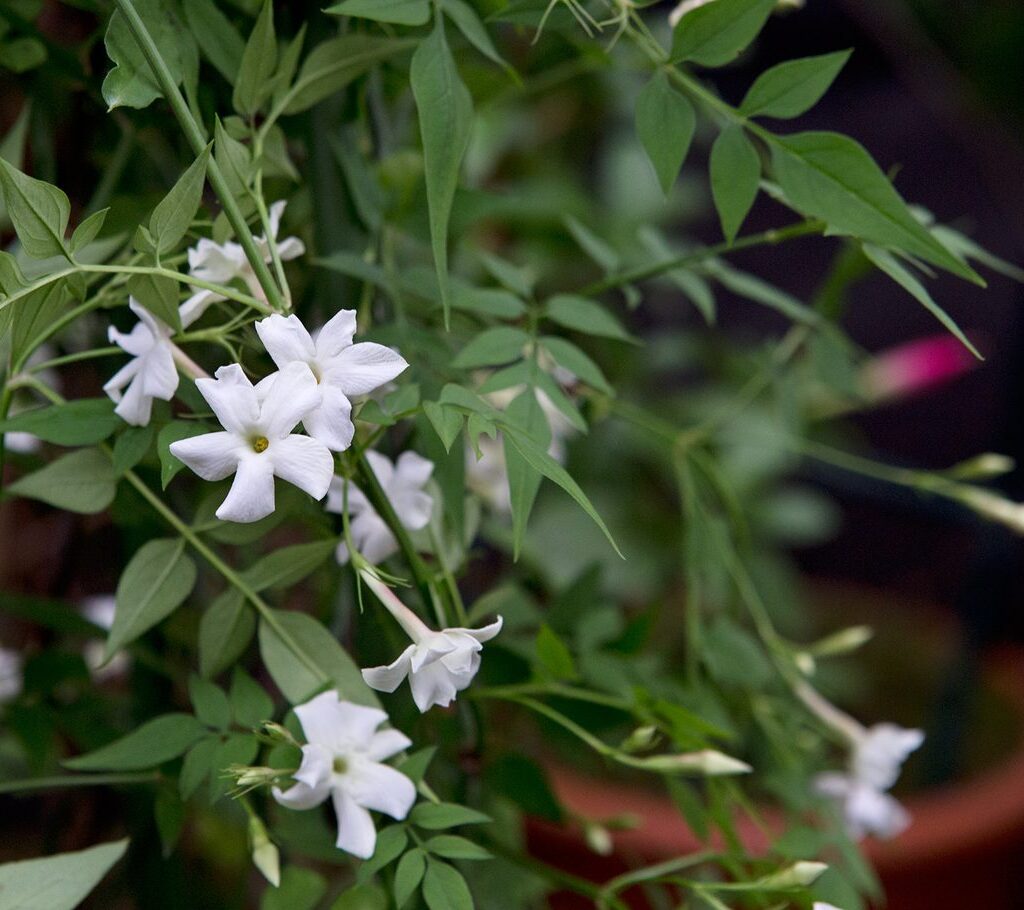
To determine if your jasmine needs watering:
- Finger test: Stick your finger about 1–2 inches into the soil. If it feels dry, it’s time to water.
- Soil moisture meter: These handy tools give precise readings to avoid overwatering.
- Wilting or dry leaves: Signs of thirst—though overwatering can cause similar symptoms, so check the soil too.
Factors That Affect Watering Frequency
1. Soil Type
- Sandy Soil: Drains quickly, requires more frequent watering.
- Clay Soil: Holds water longer; water less often to avoid sogginess.
- Loamy Soil: Ideal for jasmine—provides good drainage and moisture retention.
2. Climate
- Tropical/Hot Climates: Increase watering frequency to keep up with evaporation.
- Cool/Temperate Climates: Water less frequently, especially during cooler months.
3. Plant Size and Age
- Young plants need more frequent water to establish roots.
- Mature plants are more resilient and can go longer between waterings.
4. Container Size
Smaller pots dry out faster and require more frequent watering, while larger containers retain moisture longer.
Best Watering Techniques

1. Deep Watering:
Encourage deep root growth by watering deeply until it starts to drain out of the bottom of the pot or soaks through the garden bed.
2. Morning Watering:
Water jasmine early in the morning to give the plant a chance to absorb moisture before the sun evaporates it and to reduce fungal risks.
3. Avoid Overhead Watering:
Wet leaves can promote fungal diseases. Instead, water at the base of the plant.
Signs of Overwatering and Underwatering
Overwatering Symptoms:
- Yellowing leaves
- Soft or mushy stems
- Moldy soil surface
- Root rot (foul smell from soil)
Underwatering Symptoms:
- Dry, brown leaf tips
- Drooping or curled leaves
- Dry, cracked soil
Tip: Always adjust your watering routine based on your plant’s behavior and your environment.
Seasonal Watering Guide (At a Glance)
| Season | Outdoor Watering | Indoor Watering |
|---|---|---|
| Spring | 2–3 times/week | Every 4–5 days |
| Summer | Every 1–2 days (hot zones) | Every 3–4 days (humid room) |
| Fall | Once a week | Every 7–10 days |
| Winter | Every 10–14 days | Every 7–10 days |
Bonus Tips for Thriving Jasmine
- Mulch around outdoor jasmine to retain soil moisture and suppress weeds.
- Fertilize lightly in the growing season—preferably a balanced fertilizer every 4–6 weeks.
- Prune regularly to promote airflow and flower growth.
- Ensure good drainage in both pots and garden beds.
Conclusion
Watering your jasmine plant correctly is vital for ensuring a healthy, fragrant, and flourishing plant. While there’s no strict schedule that applies to every jasmine in every setting, the key lies in consistency and observation. By paying attention to the plant’s needs, soil condition, and environmental factors, you’ll find the ideal rhythm to keep your jasmine thriving year-round.
With the right care—including proper watering—you can enjoy the beauty and aroma of your jasmine plant, whether it graces your bedroom window or climbs along your garden fence.
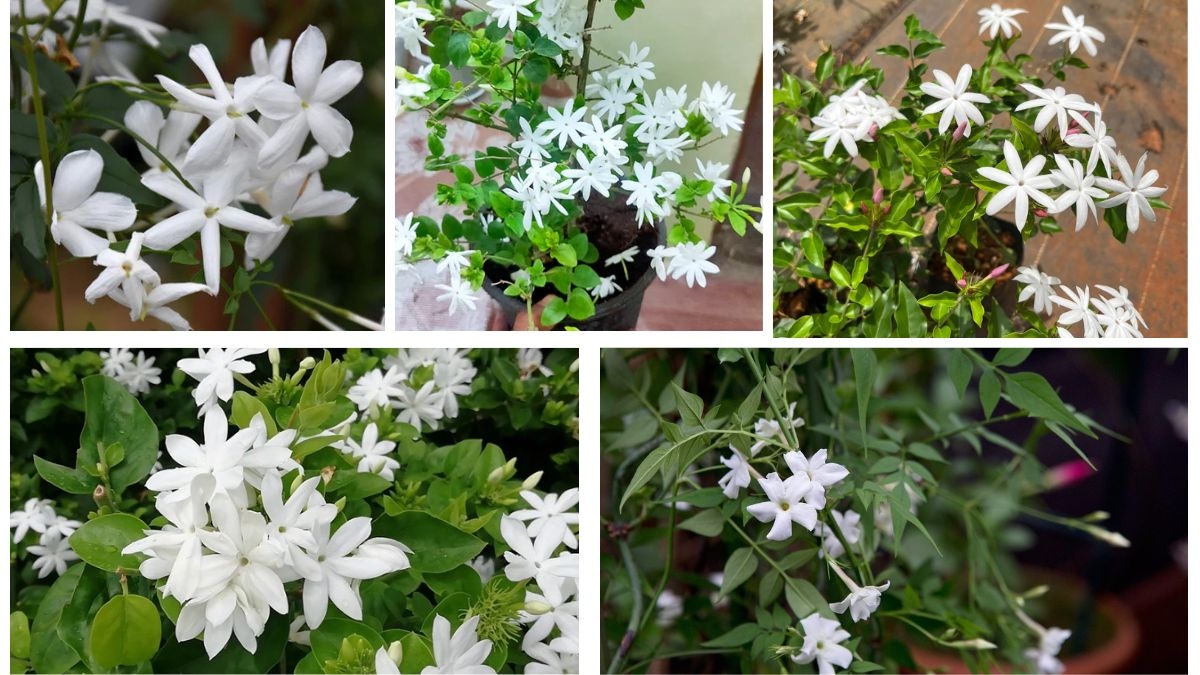



Leave A Comment